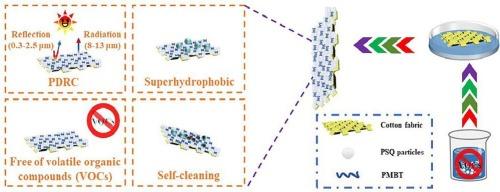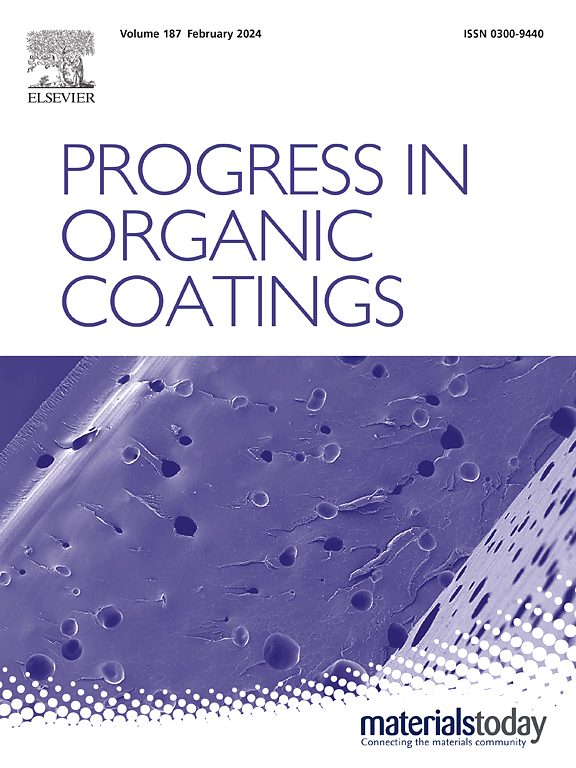Superhydrophobic cotton fabric based on aqueous paint for passive daytime radiative cooling
Abstract
Passive daytime radiative cooling (PDRC) is a technology that dissipates excess heat to outer space without any energy consumption. Numerous PDRC materials have been developed recently. However, hazardous organic solvents are often used in the fabrication process of these PDRC materials, and most PDRC materials are easily contaminated. In this study, a new scalable eco-friendly aqueous paint without volatile organic compounds (VOCs) was developed by combining fluoroacrylate copolymer with high-scattering polysilsesquioxane particles. The solar reflectivity and emissivity of the cotton fabric coated with the aqueous paint (PDRC@CF) are significantly enhanced (reach 92.2 % and 92.7 %, respectively) due to the synergistic effect of fluoroacrylate copolymer and polysilsesquioxane. The PDRC@CF has a remarkable radiative cooling effect with a surface temperature 5.7 °C lower than the ambient air and 16.1 °C lower than the pristine cotton fabric under direct sunlight exposure. Moreover, the aqueous paint endows the PDRC@CF with a washable superhydrophobic surface, whose water contact angle is 150.1°and sliding angle is 2.3°, possessing excellent self-cleaning performance. The PDRC@CF effectively combining the properties of anti-fouling and radiative cooling, can be applied to outdoor product protection and other energy-efficient cooling fields.


 求助内容:
求助内容: 应助结果提醒方式:
应助结果提醒方式:


